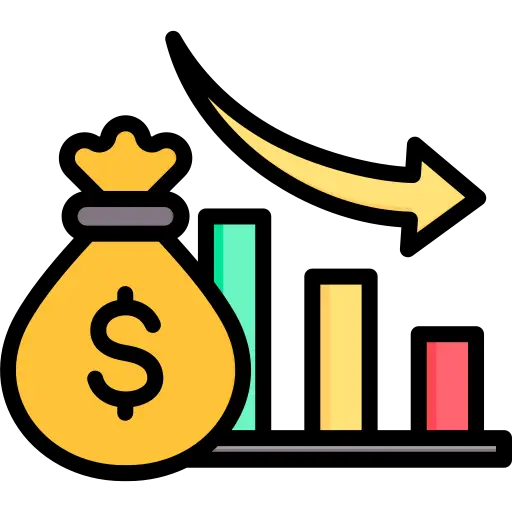Verified Insights
Precision-driven research you can trust. We uphold rigorous data validation processes to ensure every report is reliable and based on credible sources.
+91 9425150513 (Asia) support@24lifesciences.com
MARKET INSIGHTS
Global Competent Cells market size was valued at USD 2.17 billion in 2024 and is projected to reach USD 4.25 billion by 2032, exhibiting a CAGR of 10.3% during the forecast period. The market is being driven by increasing demand for molecular cloning techniques across pharmaceutical and biotechnology sectors.
Competent cells are bacterial cells that have been chemically or electrically treated to enhance their ability to uptake foreign DNA through a process called transformation. These specialized cells play a crucial role in genetic engineering applications, serving as host organisms for plasmid propagation, protein expression, and other recombinant DNA technologies. The chemical transformation method, which accounts for nearly 65% of market share, involves calcium chloride treatment followed by heat shock to create temporary pores in the cell membrane.
Market growth is primarily fueled by rising R&D expenditure in synthetic biology, with North America currently holding the largest market share of approximately 40%. Key applications driving adoption include protein expression (the dominant application segment) and high-throughput cloning. Recent industry developments include strategic collaborations among major players like Thermo Fisher Scientific and Merck KGaA, who collectively hold significant market share, to develop next-generation competent cell systems with higher transformation efficiencies for complex cloning applications.
Rising Demand for Synthetic Biology Applications Fuels Competent Cells Adoption
The global synthetic biology market is experiencing exponential growth, projected to maintain a CAGR of over 20% through 2030. This expansion directly drives demand for competent cells, which serve as foundational tools for genetic engineering workflows. Research institutions and biotech firms increasingly rely on competent E. coli strains for plasmid propagation, protein expression, and gene editing applications. The emergence of CRISPR-based technologies has particularly amplified this demand, with competent cells being essential for efficient transformation of gene editing constructs. Market leaders have responded by developing specialized strains with enhanced transformation efficiencies exceeding 109 cfu/μg for high-throughput applications.
Biopharmaceutical Production Demands Drive Market Expansion
Biologics now represent over 25% of all pharmaceutical approvals, creating substantial demand for optimized protein expression systems. Competent cells engineered for high-yield recombinant protein production are becoming indispensable in therapeutic development pipelines. The market has seen particular growth in specialized strains featuring T7 RNA polymerase systems for controlled expression and modified metabolic pathways for proper protein folding. Recent innovations include competent cells with engineered disulfide bond formation pathways, addressing a critical bottleneck in complex biologic production. With the global biologics market projected to reach $600 billion by 2025, competent cell manufacturers are investing heavily in strain optimization to meet industry requirements.
Academic Research Funding Creates Sustained Demand
Government investments in life sciences research continue to grow, with NIH funding alone exceeding $45 billion annually. This sustains consistent demand for research-grade competent cells across academic institutions worldwide. The market has responded by developing cost-optimized competent cell formulations specifically for academic labs, balancing performance with affordability. Educational applications also contribute to market growth, as molecular biology curricula increasingly incorporate hands-on genetic engineering experiments. Competent cell manufacturers have developed ready-to-use classroom kits with simplified protocols, making transformation experiments accessible even in resource-limited settings.
Stringent Storage Requirements Limit Market Penetration
Competent cells require strict temperature control during storage and transportation, typically at -80°C to maintain transformation efficiency. This creates significant logistical challenges, particularly in developing regions with unreliable cold chain infrastructure. The temperature sensitivity results in product degradation during shipping, with studies showing up to 30% efficiency loss when exposed to suboptimal conditions. Manufacturers must invest in specialized packaging and distribution networks, increasing operational costs that are ultimately passed to end-users. This pricing pressure limits market growth in cost-sensitive applications and geographic markets.
Alternative Technologies Pose Competitive Threat
Emerging DNA delivery methods such as electroporation and viral transduction are gaining traction for certain applications, particularly in eukaryotic systems. While competent cells remain dominant for bacterial transformation, these alternatives offer advantages in specific use cases like large DNA fragment cloning. The development of cell-free protein expression systems also presents competition, particularly for research applications where rapid prototyping is prioritized over scale-up potential. Market players must continuously innovate to maintain relevance as these technologies mature and adoption grows.
Specialized Strains for Next-Gen Applications Offer Growth Potential
The rise of novel bioproduction applications creates opportunities for tailored competent cell solutions. Market leaders are developing strains optimized for emerging needs such as unnatural amino acid incorporation, glycoprotein production, and toxic compound biosynthesis. The global market for these specialized strains is growing at nearly 15% annually as biotech firms seek optimized platforms for cutting-edge applications. Particularly promising are strains engineered for improved membrane protein expression, addressing a longstanding challenge in structural biology and drug discovery.
Emerging Markets Present Untapped Potential
While North America and Europe currently dominate competent cell consumption, Asia-Pacific represents the fastest-growing regional market with a projected CAGR of 12.5% through 2030. Increasing life sciences investment in China and India, coupled with growing biopharmaceutical manufacturing capacity, creates substantial growth opportunities. Local manufacturers are gaining traction by offering cost-competitive alternatives to global brands, while multinationals are establishing regional production facilities to better serve these markets. The expansion of cold chain infrastructure in these regions further facilitates market penetration.
Quality Control Complexities Strain Manufacturing Operations
Maintaining consistent transformation efficiency across production batches presents significant quality control challenges. Even minor variations in growth conditions or processing parameters can impact cell competence, requiring rigorous testing protocols. Each batch typically undergoes extensive QC testing, including transformation efficiency assays and plasmid compatibility testing, adding to production costs and lead times. The need for specialized personnel and equipment further compounds these operational challenges, particularly for smaller manufacturers.
Intellectual Property Disputes Create Market Uncertainty
The competitive landscape is increasingly marked by patent disputes over proprietary strain modifications and manufacturing processes. Recent litigation involving key industry players has created uncertainty around technology licensing and freedom-to-operate considerations. These legal challenges may slow innovation as companies navigate complex IP landscapes, particularly in emerging application areas where patent claims often overlap. Smaller firms face particular challenges in conducting thorough patent searches and securing necessary licenses, potentially limiting market entry.
Chemically Competent Cells Dominate the Market Due to Cost-Effectiveness and Ease of Use
The market is segmented based on type into:
Chemically Competent Cells
Subtypes: Calcium chloride-treated, TSS method, Hanahan method, and others
Electrocompetent Cells
Subtypes: High-efficiency, ultracompetent, and specialty strains
Protein Expression Segment Leads Due to Widespread Use in Biopharmaceutical Production
The market is segmented based on application into:
Protein expression
Subcloning & Routine Cloning
Phage Display Library Construction
Toxic/Unstable DNA Cloning
Others
Biopharmaceutical Companies Drive Market Growth Through Increased R&D Investments
The market is segmented based on end user into:
Biopharmaceutical companies
Contract research organizations
Academic and research institutions
Diagnostic laboratories
Others
E. coli Strains Maintain Market Leadership Due to Well-Established Genetic Tools
The market is segmented based on strain type into:
E. coli strains
Subtypes: DH5α, BL21(DE3), TOP10, and others
Other bacterial strains
Yeast strains
Market Leaders Drive Innovation Through Strategic Expansions and R&D Investments
The global Competent Cells Market, valued at $2.175 billion in 2024, is projected to grow at a robust 10.3% CAGR through 2032. This growth is fueled by intensifying competition among key players who are expanding their technological capabilities and geographical footprints. The market remains semi-consolidated, with the top four manufacturers Thermo Fisher Scientific, Merck KGaA, Agilent Technologies, and Beijing TransGen Biotech collectively holding nearly 30% market share.
Thermo Fisher Scientific dominates the landscape, leveraging its extensive product portfolio for chemically competent cells, which account for 65% of the market. The company’s stronghold in North America (contributing ~10% to global revenues) is complemented by aggressive expansions in Asia-Pacific and Europe, where demand for genetic engineering tools is rising.
Meanwhile, Merck KGaA and Agilent Technologies are capitalizing on high-growth applications like protein expression (the largest application segment) and high-throughput cloning. Both companies have recently launched next-generation electrocompetent cells with improved transformation efficiencies, targeting pharmaceutical and academic research clients.
Asia-Pacific is emerging as a battleground for regional players like Takara Bio and Yeastern Biotech, which are gaining traction through cost-competitive offerings. Takara Bio’s recent collaboration with Japanese research institutes to develop specialized competent cells for CRISPR applications underscores this trend.
Merck KGaA (Germany)
Agilent Technologies, Inc. (U.S.)
Takara Bio Inc. (Japan)
Beijing TransGen Biotech (China)
Promega Corporation (U.S.)
New England Biolabs (U.S.)
QIAGEN N.V. (Netherlands)
Bio-Rad Laboratories, Inc. (U.S.)
Yeastern Biotech (Taiwan)
GeneScript Corporation (U.S.)
The global competent cells market is witnessing robust growth, projected to expand from $2,175 million in 2024 to $4,248 million by 2032, driven by accelerating demand in synthetic biology applications. Competent cells serve as foundational tools for plasmid transformation, enabling breakthroughs in genetic engineering. North America currently dominates the market with around 35% revenue share, while Asia-Pacific emerges as the fastest-growing region due to increasing biotech investments. A key driver is the pharmaceutical industry's shift toward biologics development, where competent cells facilitate efficient protein expression systems used in approximately 45% of therapeutic protein production. Furthermore, technological improvements in transformation efficiency reaching upto 1x10^9 transformants per µg of plasmid DNA continue to push adoption rates higher.
Expansion of High-Throughput Cloning Workflows
High-throughput cloning applications are gaining traction in both academic and industrial research settings, significantly increasing competent cell consumption. Automated cloning systems now process 500-1,000 reactions daily in large-scale facilities, driving demand for electrocompetent cells that offer faster transformation cycles. The protein expression segment currently accounts for 28-32% of total market revenue, with newer competent cell strains being optimized for difficult-to-express proteins. In parallel, pharmaceutical companies are adopting specialized competent cells for toxic gene cloning, reducing development timelines by 20-25% compared to conventional methods. This trend aligns with industry's push toward accelerated drug discovery pipelines.
Vendors are increasingly offering application-specific competent cell lines to address niche research needs. Approximately 15-18% of market revenue now comes from specialized products such as methylation-sensitive strains or cells engineered for viral vector production. The CRISPR revolution has further stimulated demand, with 40% of gene editing workflows relying on high-efficiency competent cells for guide RNA plasmid transformation. Meanwhile, continuous improvements in storage stability some formulations now maintain competency for 12+ months at -80°C are reducing operational costs for end users. Market consolidation continues as major players like Thermo Fisher and Merck KGaA expand their portfolios through strategic acquisitions of niche manufacturers, collectively holding 30% market share globally.
North America
North America dominates the Competent Cells Market, accounting for over 30% of global revenue. The region’s leadership stems from robust biotechnology research infrastructure, high R&D investments (U.S. NIH allocated $48 billion for life sciences in 2023), and strong industry-academia collaborations. Key players like Thermo Fisher Scientific, Merck KGaA, and Agilent Technologies drive product innovation, focusing on high-efficiency chemically competent cells for gene cloning and protein expression. However, stringent regulatory oversight by the FDA increases compliance costs, posing challenges for smaller manufacturers. The U.S. remains the largest contributor, with Canada showing steady growth due to rising government funding for synthetic biology research.
Europe
Europe holds a 20% market share, supported by EU Horizon Europe funding for genomic research and a well-established biotech sector. Germany and the U.K. are pivotal, hosting leading institutions like Max Planck Institutes and Cambridge University, which demand high-quality electrocompetent cells for CRISPR applications. EU GMP standards ensure consistent product quality but create barriers for non-European suppliers. Sustainability trends are pushing manufacturers to develop eco-friendly cell preparation methods, though cost sensitivity limits widespread adoption. Mergers, such as Qiagen’s expansion into next-gen competent cells, reflect the region’s competitive dynamism.
Asia-Pacific
Asia-Pacific is the fastest-growing region (CAGR ~12%), fueled by China’s $1.4 trillion biotechnology push and India’s thriving contract research sector. Beijing TransGen Biotech and Takara Bio dominate locally, offering cost-effective chemically competent cells for academia and CROs. India’s vaccine production boom post-COVID-19 has amplified demand for competent cells in plasmid DNA manufacturing. While Japan and South Korea prioritize high-end electroporation technologies, Southeast Asia lags due to fragmented infrastructure. Pricing pressures and IP concerns persist, but increasing FDA-approved facility investments signal long-term potential.
South America
South America represents a nascent but promising market, with Brazil leading due to government initiatives like the National Biotechnology Development Policy. Argentina’s agricultural biotech sector drives demand for specialty competent cells in crop engineering. However, economic instability, import dependencies, and limited local manufacturing hinder growth. Collaborations with global players, such as Merck’s distribution partnerships, aim to bridge gaps, but currency volatility remains a deterrent for large-scale investments.
Middle East & Africa
The MEA market is emerging, with Israel and the UAE at the forefront due to biotech hubs like Dubai Science Park. Saudi Arabia’s Vision 2030 allocates funds for life sciences, though reliance on imports constrains accessibility. South Africa shows potential with its HIV/AIDS and TB research programs, but funding shortages and weak cold-chain logistics delay market maturation. Strategic alliances, such as Thermo Fisher’s distribution agreements in the UAE, are critical to sustaining incremental growth.
This market research report offers a holistic overview of global and regional markets for the forecast period 2025–2032. It presents accurate and actionable insights based on a blend of primary and secondary research.
✅ Market Overview
Global and regional market size (historical & forecast)
Growth trends and value/volume projections
✅ Segmentation Analysis
By product type or category
By application or usage area
By end-user industry
By distribution channel (if applicable)
✅ Regional Insights
North America, Europe, Asia-Pacific, Latin America, Middle East & Africa
Country-level data for key markets
✅ Competitive Landscape
Company profiles and market share analysis
Key strategies: M&A, partnerships, expansions
Product portfolio and pricing strategies
✅ Technology & Innovation
Emerging technologies and R&D trends
Automation, digitalization, sustainability initiatives
Impact of AI, IoT, or other disruptors (where applicable)
✅ Market Dynamics
Key drivers supporting market growth
Restraints and potential risk factors
Supply chain trends and challenges
✅ Opportunities & Recommendations
High-growth segments
Investment hotspots
Strategic suggestions for stakeholders
✅ Stakeholder Insights
This report is designed to support strategic decision-making for a wide range of stakeholders, including:
Pharmaceutical and biotech companies
Medical device and diagnostics manufacturers
Healthcare providers and hospital systems
Contract research and manufacturing organizations
Investors, consultants, and policy makers
-> The global competent cells market was valued at USD 2,175 million in 2024 and is expected to reach USD 4,248 million by 2032.
Which key companies operate in Global Competent Cells Market?
-> Key players include Merck KGaA, Thermo Fisher Scientific, Agilent Technologies, Takara Bio, and Beijing TransGen Biotech, among others.
-> Key growth drivers include advancements in biotechnology research, increasing demand for genetic engineering, and rising applications in protein expression and pharmaceuticals.
-> North America is the dominant market, while Asia-Pacific is the fastest-growing region.
-> Emerging trends include high-efficiency competent cells for CRISPR applications, electrocompetent cells for advanced cloning, and integration with synthetic biology tools.
Our Clients
“The data provided by 24LifeScience was clear, well-organized, and useful for internal strategy planning. It helped us understand the competitive landscape more effectively.”
“We used one of their market overview reports for early-stage feasibility work. It gave us a helpful snapshot of current trends and key players in our therapeutic area.”
“I appreciated the team’s responsiveness and willingness to adjust the scope based on our feedback. The final report was aligned with our expectations and timelines.”
“Their custom report on clinical trial trends was a helpful reference as we explored new indications."
“As someone working on early product planning, I found their therapeutic area briefs quite useful. The information was presented in a way that made it easy to extract key takeaways.”
“We didn’t need anything overly complex—just solid, dependable data. 24LifeScience delivered exactly that, without unnecessary fluff.”
“Their reports gave us a good foundation to start our own market assessment. While we supplemented it with other data, this was a great starting point.”
“I’ve used a few of their reports for academic and grant writing purposes. They’re generally well-cited and reliable for understanding market scope.”
At 24LifeScience, we combine domain expertise with dependable research delivery. What truly differentiates us isn't just what we do — it's how we do it. Our clients trust us because we offer consistency, security, value, and most importantly, insight that drives action.

Precision-driven research you can trust. We uphold rigorous data validation processes to ensure every report is reliable and based on credible sources.

We uphold rigorous data validation processes to ensure every report is reliable, up-to-date, and based on credible sources.

24LifeScience powers research for top firms in 20+ nations.Chosen by leading life sciences companies worldwide.

We offer competitive pricing models that align with your project scope — no hidden charges, no lock-in. Tailored pricing for every scale and need.

8–10+ years of life sciences expertise turned into strategic insights.We don’t just summarize data we contextualize it.

Whether it's a ready-made report or a custom project, we deliver within the promised timeline With real-time updates